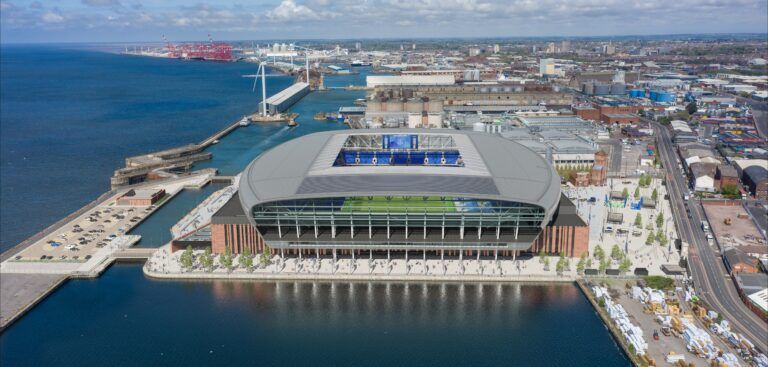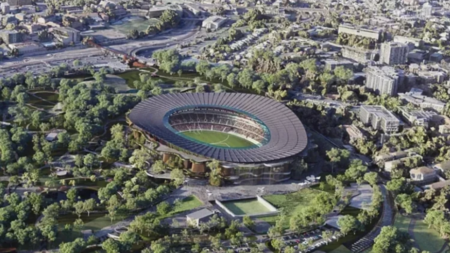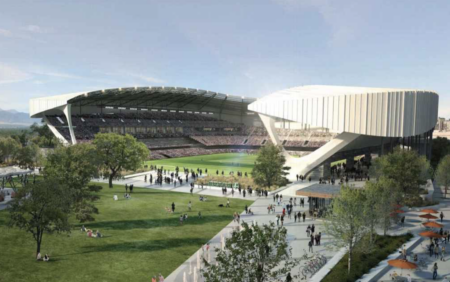English Premier League soccer side Everton FC continues on its long journey to build a new home stadium at Bramley-Moore dock and has revealed further information, including updated plans and design amendments.
The club has undertaken improvements to the design to meet the satisfaction of the local authority planning approval, with much consideration being given to keeping in with the heritage of the site. Should all go to plan and be given the green light, Everton has announced it ‘anticipates a planning determination by the end of the year and aims to be on site at the start of 2021’.
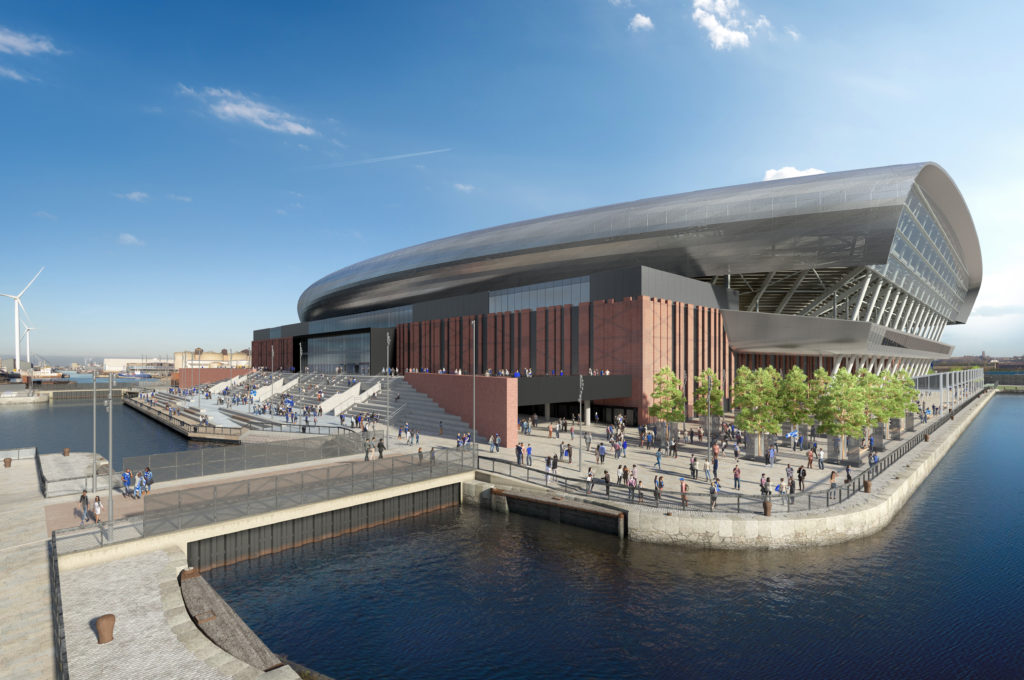
In a blog from Colin Chong, Everton’s stadium development director, it details the work going on behind the scenes to progress with the project:
“The past few months has been an important period for us. We have been responding to planning queries and have established our technical and delivery team in anticipation of planning approval.
Following a detailed and comprehensive tender process, we appointed Laing O’Rourke as our preferred building contractor. Through their own transparent tender process, they appointed Pattern as the project’s technical architect, working and engaging directly with Laing O’Rourke.
Buro Happold and Planit-IE have been retained as engineering consultants and landscape architects respectively. Representatives from across this project team have recently been on-site carrying out several further surveys on the land and existing structures as we gather the data we need ahead of a determination by the planning authorities.”
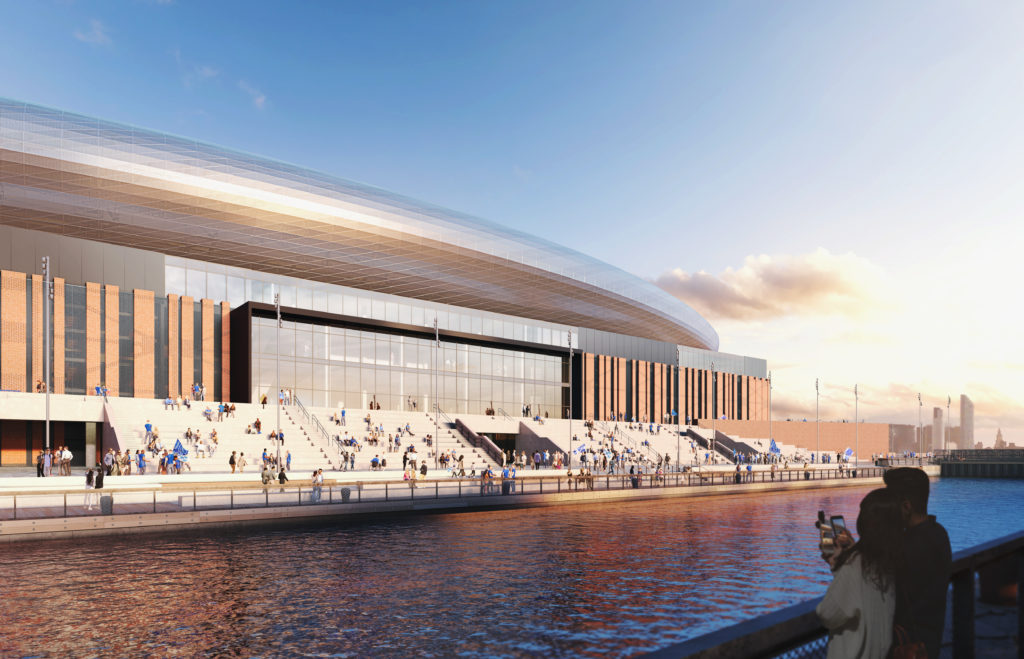
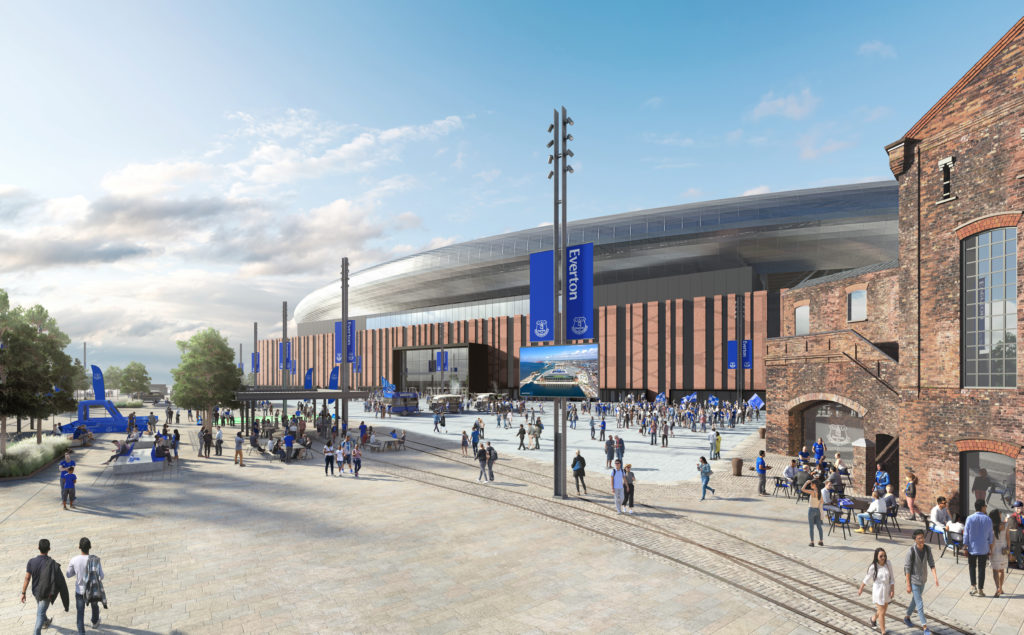
Chong describes in detail what changes have been made to the stadium design following input from heritage-related organizations:
“Our design improvements will enhance the stadium architecturally and aesthetically – and are in line with feedback from the consultation process conducted over the past few months, including our discussions with heritage-related organisations.
The most visual of the design improvements is around the West Stand (the stand facing the River Mersey).
As you will see from the images, we have introduced a new river-facing stepped plaza and removed the multi-storey car park, which helps with the symmetry of the stadium and brings back river views for supporters in the West Stand and from the top of the stepped plaza.
As well as enhancing symmetry and general aesthetics, this new stepped plaza creates a covered fan area which protects supporters and the turnstile and lounge entrances from any inclement weather.
As initially presented in our second Public Consultation, the West Quay will accommodate parking for some of our disabled supporters.
The solar panels originally proposed on the West Quay will now be relocated to the stadium roof, freeing up and decluttering the quay for non-matchday use and allowing for extra matchday parking.
This also improves the efficiency of this renewable energy source and provides the opportunity to increase the number of solar panels in future, if required.
We have simplified the brick façade and made the tribute to the Archibald Leitch lattice work more obvious on the external brickwork of the stadium.
We have also covered some of the most exposed areas within the stands to better protect supporters from the elements.
Finally, in line with the Council’s World Heritage Site guidance, we have slightly reduced the overall height of the stadium – without affecting capacity in any way.
We believe these enhancements create a stronger connection between the stadium and the Mersey – as well as offering the people of the city and visitors a fantastic new public space to enjoy within a World Heritage Site.”
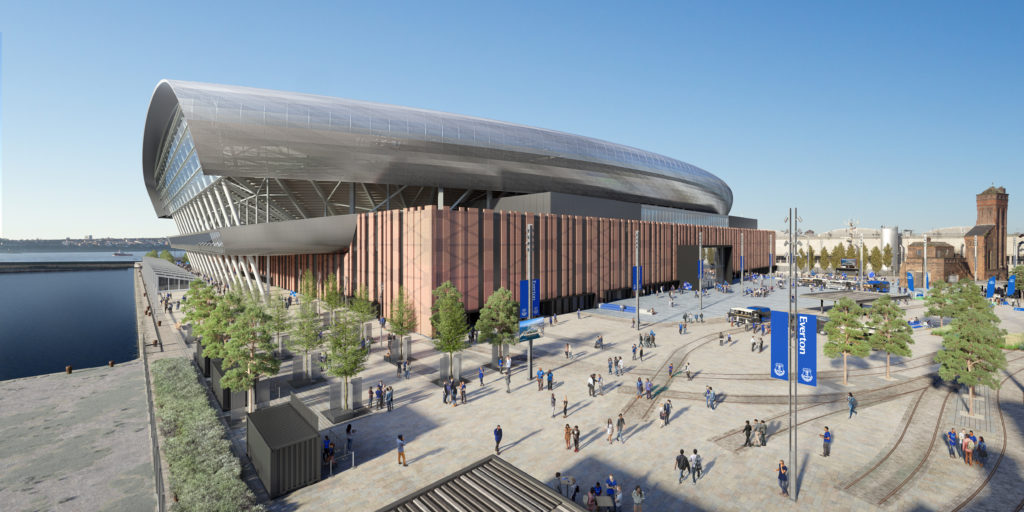
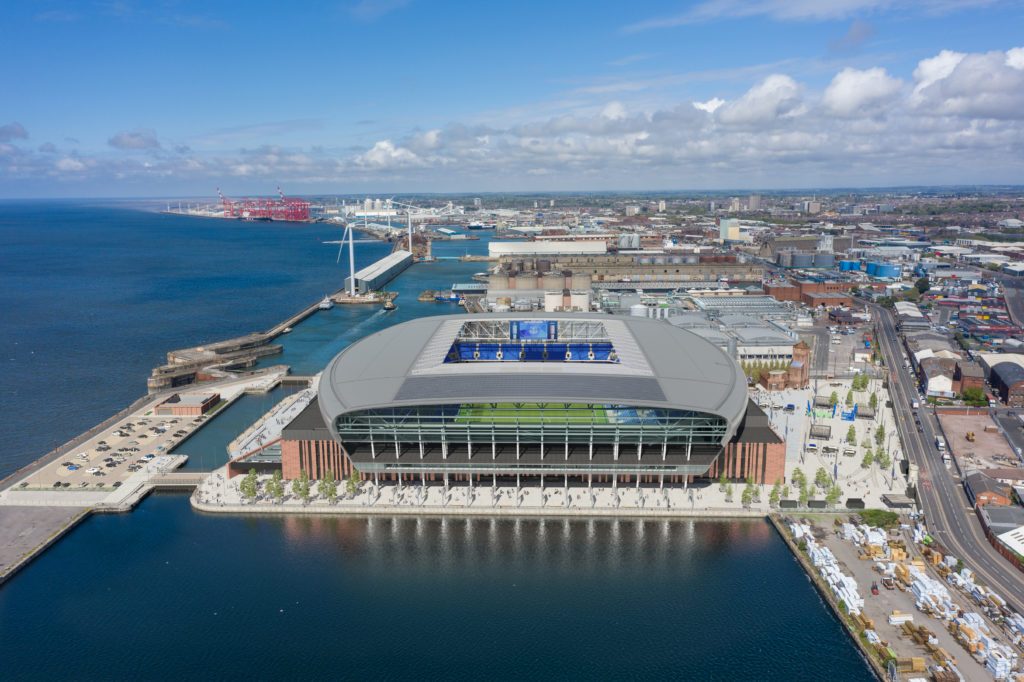
Chong continued to describe the updated planning application and timescales, which sheds some light for fans on why the stadium build has been such a drawn-out process.
“As you will be aware, the scale and detail of the planning application for Bramley-Moore Dock makes it one of the largest our local authority has ever received.
Over the past few months, Liverpool City Council’s planning department has been consulting on the applications with the Liverpool public, as well as neighbouring authorities, emergency services, heritage and environment organisations and other regional and national stakeholders.
As part of this process – and to address some of the feedback from consultees – we have been working with the Council and other agencies to amend some elements of the designs that were originally consulted on and submitted as part of our application.
These updated designs will be formally submitted to the Council in early September and some of the new visuals can be viewed below.
I am sure you will agree they significantly enhance a stadium concept that was already quite stunning.
While these updated plans will not require the submission of a full new planning application, they will require a formal public consultation on the revised elements.
This consultation, led by the Council, is anticipated to last 28 days and will be an opportunity for everyone to comment on these additional features.
Following this, and due to the size of the application, Liverpool City Council may need to convene a special planning committee meeting towards the end of the year to give their determination to our application. The detail of this determination is likely to dictate whether the application will also need to be reviewed by central Government.
This additional local consultation, together with some aspects of the project relating to third parties having slowed slightly due to the impact of COVID-19, means that – subject to planning approval and finalising our funding packages – it is most likely that work could commence on-site early in 2021.
As there are currently so many factors over which we do not have direct control, it would be unwise to commit to a specific date when our build will commence – or when we are likely to be playing in the new stadium. However, we have every confidence in our project plan and the team we have assembled to deliver it. And, as I’m sure you know, everyone at the Club is entirely committed to getting us into a new home at Bramley-Moore Dock as soon as we possibly can.”
After explaining how Everton and its design team have been working closely with local authorities on the heritage aspect of the site, he explains that there has been opposition from Historic England and the International Council on Monuments and Sites (ICOMOS), a heritage body acting on behalf of UNESCO. The body has concerns over the plan to infill the dock and the impact it could have to the waterfront site.


